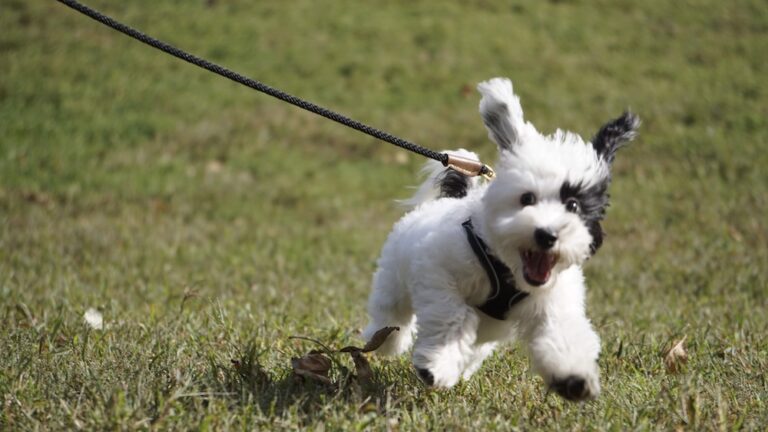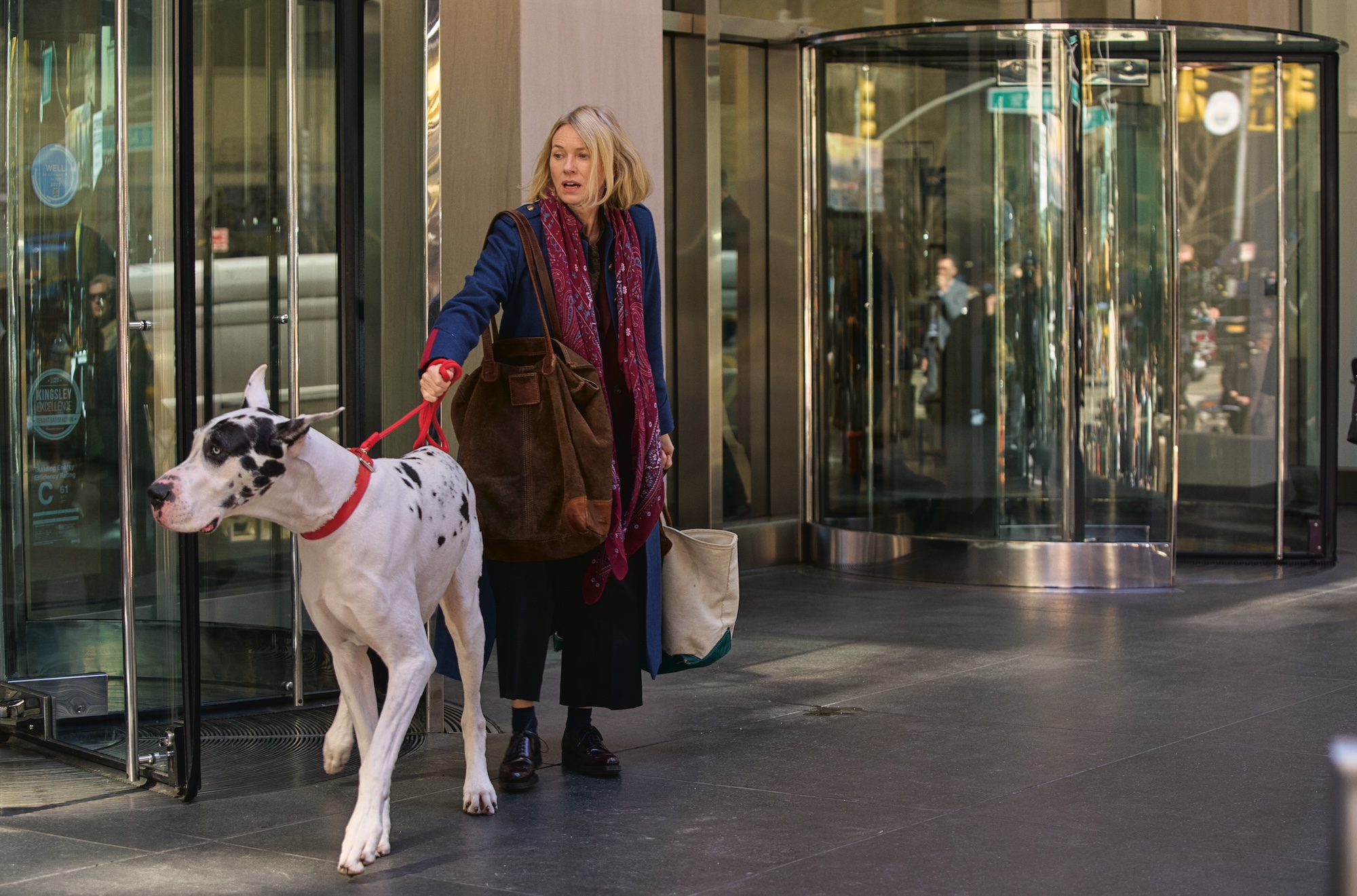An old Peanuts book was titled Happiness is a Warm Puppy. And Snoopy, the cartoon’s star beagle, does bring joy to Charlie Brown throughout its run. But inside his own mind, unseen by the human characters, Snoopy keeps busy by, among other things, fantasizing about adventures as a World War I flying ace and fretting about the fate of the planet. In the real world, we want to make our dogs as happy as they make us—but, without thought bubbles, we have no way to be sure what’s happening between their ears… even if it’s almost certainly not historical fiction about military aviation.
What, exactly, constitutes canine happiness? And do dogs experience that emotion as we know it? Fortunately, behaviorists and ethologists have tackled these and related questions. Their insights can give dog owners a better understanding of their pets’ inner lives and needs, and how they can best help them achieve their version of happiness.

What is happiness to a dog?
Dr. Greg Berns of Emory University trained dogs to sit in MRI machines and observed their brain activity when presented with certain stimuli. His research indicates that in addition to liking, for example, frankfurters (not surprising), dogs enjoy praise as much and sometimes more (also not surprising). This is one of many efforts scientists have made to figure out what dogs are thinking, but we still can’t read their minds. Therefore, our answer to the question “what is happiness to a dog?” is necessarily imprecise.
Some people contend that dogs lack a larger sense of happiness that a human can experience because of the notion that they “live in the moment.” But while Dr. Clive Wynne, Director of the Canine Science Collaboratory at Arizona State University, says that “the experience of the moment is complete” for dogs in the way it might be for small children—in that “a happy event is 100% happy right now, and then a toe is stubbed and it’s 100% sadness right now”—he also acknowledges that, in another sense, of course dogs do not live only in the moment. “We know,” he says, “that our dogs remember things from the past, and that leads to expectations for the future. My dog knows that we usually go out for the morning walk after I’ve had breakfast, after I’ve showered, after I’ve shaved, and most crucially after I’ve brushed my teeth,” he says, ending with the event that triggers his dog’s most fervent excitement for the approaching walk.
Says ethologist Dr. Marc Bekoff, professor emeritus of Ecology and Evolutionary Biology at the University of Colorado, Boulder, “[Dogs] get used to the routine and they know that if you go to the door, you pick up a leash, and you pick up your keys—or even you walk in a certain way—that, ‘Oh, I’m going to the dog park to see my friends.’” As to whether this type of anticipation means that dogs can be happy outside of the individual moment the way a person could, Bekoff can’t give a definitive answer—but has a hunch. “I’m not sure how you’d study it,” he says, “but I have no reason to believe that might not be the case.”
Let your dog choose
Bekoff says that dogs’ happiness may have a lot in common with humans’ version. Dogs, he says, are “big-brained mammals who are pretty much like us.” And, like us, they’re happier with choices. Dr. Zazie Todd, author of Wag: The Science of Making Your Dog Happy, has written about choices that most dog owners can give their pets. Among them: let them choose when to train and when to receive affection, instead of forcing them. If you’re petting a dog, make sure they can walk away if they want to.
In her book, Todd writes about letting dogs decide who to play with—if it’s unclear whether puppies are getting along, you can try separating them and seeing whether the puppy who may have been bullied runs back to the others to continue playing. If so, they were probably having a good time.
Another simple thing we can do to help dogs feel happier, Bekoff suggests, is to let them “be who they are and perform as many natural behaviors as possible.” While we must control certain aspects of dogs’ lives, they can benefit from room to make decisions.
“Let dogs sniff,” Bekoff recommends. “Their walk is for them, not for you.” Even if humans don’t always understand it, dogs get a lot out of sniffing—smell is a key sense for them. “I hear people say dogs are incessantly sniffing or wiggling their nostrils or tilting or rotating their head to pick up sound,” says Bekoff, and feel that the activity isn’t worthwhile because “there’s nothing there.” But, Bekoff says, “there’s a lot there for your dog or cat—there’s maybe nothing there for you.” To maximize their happiness, he continues, “dogs, cats, and other animals need to exercise their senses as well as their bodies.”
Be with your dog
When it comes to the big-picture answer to the question of how to make a dog happy, Wynne lists “protect your dog from loneliness” right after “protect your dog from pain.” This is because dogs are particularly social and attached to their families. “Dogs have an exceptional capacity and drive to form strong emotional connections with members of other species,” Wynne says. He goes on to say that this tendency isn’t limited to humans—“if you put a dog in the goat barn, the dog will grow up loving goats.” Dog owners who have raised puppies alongside cats may confirm that dogs can be talented at maintaining interspecies friendships—though there are often challenges, and you may want to refer to our guide if you’re aiming to happily house a feline and a canine together.
Wynne says that, in comparing the DNA of dogs to that of wolves, he and colleagues have observed a genetic mutation that—in human beings—causes Williams Syndrome, whose impacts include “exceptional gregariousness.” Dogs are not built to spend a long time without someone to hang out, exercise, or play with.
Your presence can also help your dog face challenging situations. You can’t use words to explain to your pet that a routine vet visit is nothing to be scared of. But, if you’re allowed, you may be able to comfort them by staying nearby and using a positive tone of voice and body language. Of vet visits, Wynne says: “If you possibly can, be with your dog.” He adds: “If you show leadership—you’re not panicked, you’re using a calm voice, you’re saying, ‘hey, this is not a bad place, this is not a bad situation, we’re all friends here, nothing bad will happen’—then that will help your dog through.” At least one study cited in Dr. Todd’s book suggests that the presence of an owner petting and speaking to a dog can make vet visits less stressful.
Make your dog’s life interesting
“Dogs are not stupid,” Bekoff says, and when they don’t follow commands that their owners expect them to know “it’s often because they’re just not interested or something else is going on.” He relates his observation about dogs in certain experiments. “Sometimes you look at these dogs,” he says, “and they’re going, ‘you really want me to do that?’ Or ‘why would I do that? I did that five minutes ago.’” If your dog seems to not want to fetch the same ball 20 times in a row, or isn’t engaged with a toy, game, or command that they seemed to like before, you might get better results by mixing it up.
“So many home dogs are just bored,” Bekoff says. “They’re bored all the time, so asking them to work for food in a certain way that enriches their lives could be a good idea.”
Bekoff points out that dogs enjoy enrichment. While they shouldn’t be compelled to work—he emphasizes that this is about “asking” them to work and not “making” them do so—they’ll often choose the more challenging path. “The psychological term for it in research,” he says, “is ‘contrafreeloading.’ And it basically means that these animals, given the choice of easy-to-get food or hard-to-get food, don’t mind working.” You might find that your dog relishes the chance to “hunt” for food in a puzzle—or they may demonstrate an interest or ability at hiking, agility, or therapy. Not every task is a good fit for every dog, but the right activity can add a lot to their lives.
A recent story in Oregon Public Broadcasting illustrates this point. An organization called Rogue Detection Teams tracks endangered species through the scent of fecal matter, using rescue dogs the article says were rejected by many because they were “obsessed with fetch.” It’s a reminder that, like humans, dogs have talents and interests that can be harnessed for their own good and society’s. Because they’re so interested in the work, these dogs learn new scents very quickly.

How can you tell if your dog is happy?
Social media users who love dogs may have seen videos of canines purportedly constructing simple sentences—like “I love you”—via the use of soundboards. We’re not privy to research supporting or refuting the idea that these communicative canines understand syntax and are able to convey abstract ideas through words, but the dogs in most pet owners’ lives don’t have the gift of spoken or written language. Still, though, those who are attuned to their dogs can pick up cues about their state of mind.
Explains Bekoff: “When people say ‘dogs can’t talk to us,’ I always qualify that and say, ‘No, they can’t talk to us in English—but dogs are talking and communicating with us all the time.’” For this reason, he cites becoming “literate in dog” as a key way to monitor and encourage the happiness of your pet. This means watching for body language, listening for barks, and being receptive to the signs your dog gives that they’re enjoying something—or not. Bekoff says that he sees this in dog owners who can’t tell the difference between dogs playing with one another or fighting, and thus interfere with their pets at the wrong time. “I can understand why they’re doing it,” he says, “but then the dogs never learn to resolve what’s going on on their own.”
A happy dog may wag their tail loosely back and forth or in circles or “smile” with an open, relaxed mouth. Having said that, not all tail wags or open mouths mean your dog is having a good time—and dogs have other ways of expressing joy. Reading dogs’ body language, and your dog’s specifically, is a skill that you can refine over time. Learning to observe and listen to your dog—to be able to detect when there’s a problem—can improve their life and your relationship. This means listening for their barks, watching their tails and ears, and noticing what seems to please and motivate them. This type of attention may also help with training.
And while you can’t verbally communicate certain concepts to your dog, you can still let them know that situations they may find scary are okay. Through counterconditioning, you can use a reward like food to give them more positive feelings about vet visits, thunder, or strangers. Trainers will have more detailed instructions on how to do this at an appropriate pace.

What activities will make a dog feel happy?
That depends, because dogs are individuals. Just as one person enjoys sudoku puzzles and another prefers the mosh pit at a metal concert (and a certain number of people embrace both or neither), different dogs like different things. In her book, Dr. Todd writes that “the important thing is that we recognize the needs of the dog we have and cater to them.”
“I’m always trying to encourage people not to think about breeds as being like marques of motor vehicle,” Wynne says, meaning that dogs of the same breed are not destined to have the same personality. While he acknowledges that certain breeds have traits that, on average, make them better suited to tasks—like herding sheep—he says that their differences can still be considerable. Even beyond members of the same breed, Wynne remembers encountering two cloned dogs who were genetically identical and lived in the same household. Nevertheless, he says, “their personalities were complete chalk and cheese.”
Just because you once had a dog who enjoyed certain activities doesn’t mean that your next dog will feel the same way. “The dog of my childhood,” Wynne remembers, “used to love being lifted up and sort of thrown around. He thought that was all great fun.” He soon discovered that this was not amusing to his current dog. If anyone tries to lift her up, he says, “she’s terrified.”
You’re most likely to have a happy dog if you do your best to listen to them. Bekoff sums it up: “There’s few if any one-size-fit-all explanations… I’ll have people say ‘Well, the last two dogs I had were really happy when I did this, but now my new dog isn’t—what’s wrong?’ And I’m going, ‘There’s nothing wrong.’”
“Not all your human friends want the same kind of treatment,” says Wynne. “And that’s true for your canine friends as well.”




